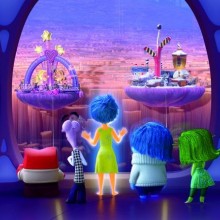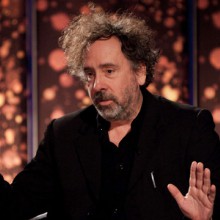Words by Anwar Brett
“I’ve no idea where this interest came from. My Mum, God rest her soul, said that I drew my first Mickey Mouse when I was five. We had no artists in our family, but I’ve always been fascinated by it.”
While a childhood love of animation is nothing unusual, for Brian Cosgrove it sowed the seeds for a long and successful career. What started off with a Mickey Mouse doodle would one day lead him to create some of the most iconic children’s animation characters of all time.
Together with partner Mark Hall, Cosgrove has produced series and films which have touched generations. His original shows, such as Danger Mouse (1981-92) and Count Duckula (1988-93), have become part of the national consciousness, while his acclaimed adaptations of The Wind in the Willows (1983) and The BFG (1989) breathed new life into modern classics.
"I suppose a lot of it for me was the grounding I had when I was young. The scripts for Bugs Bunny and Daffy Duck were extremely funny but also very mature. They’re not childish."
Cosgrove wasn’t always sure of the path his life would take. “I went to art school on a commercial design course, thinking I was headed for a life in advertising and commercials. Then a teacher asked me one day if I had ever thought about working in television.”
Granada Studios had recently been set up in the North, and his teacher was in charge of setting up its graphics department. He asked Cosgrove to come on board. For nine years, Cosgrove worked opposite his future business partner Mark Hall, building up an enduring friendship that would shape his life and career for years to come.
In the early 1970s, Hall and Cosgrove set up Stop Frame Productions together. The pair were heavily influenced by prestigious productions coming out of Eastern Europe; Cosgrove cites Czech animator Jiri Trnka, who produced model films based on Czechoslovak fables, as an inspiration. “They treat animated films like high art over there,” he remarks.
Cosgrove was fascinated by the mechanics of Trnka’s models. “He used ball and socket joints, so the arm could turn and stay in position. Over here most of the figures were wired, so we started with that principle, and I had a batch made out of brass. But Mark realised that the brass joints I’d had made would, in fact, wear. They needed to be steel. He found someone who could do all that, and established the jointing system that we used from then on.”
"We never had any trouble coming up with ideas. We had so many people who had the same mental approach as us."
The team at Stop Frame Productions were bound together by a shared working philosophy. “The sort of things we produced reflected the mentality of the art school,” Cosgrove says. “When you’re at art school, you don’t have any restrictions and your ideas can flow. We never had any trouble coming up with ideas. We had so many people who had the same mental approach as us. One would come up with an idea, then you’d get a group together and they would all be able to contribute.”
By the mid-1970s, Stop Frame Productions had evolved into Cosgrove Hall Films. Taking on Thames Television as a primary client, the company went from strength to strength, producing several BAFTA-winning projects, including The Wind in the Willows (1983) and Alias the Jester (1985), with multiple nomination nods along the way. Many of their programmes have stood the test of time, none more so than Danger Mouse, the rodent spy spoof featuring the voices of David Jason and Terry Scott.
Much of the enduring appeal of those Cosgrove Hall hits lies with the quality of the scripts and their knack for making adults laugh as well as children. “I suppose a lot of it for me was the grounding I had when I watched all those Americans cartoons when I was young,” Cosgrove explains. “The scripts that they produced for Bugs Bunny and Daffy Duck were extremely funny but also very mature. They’re not childish.”
Cosgrove was the deserved winner of the Special Award at the 2012 British Academy Children's Awards. His advice to budding animators is simple: “Don’t give up.” It’s this attitude that has got him to where he is today. Now, Cosgrove can reflect on a packed career with deserved satisfaction.






